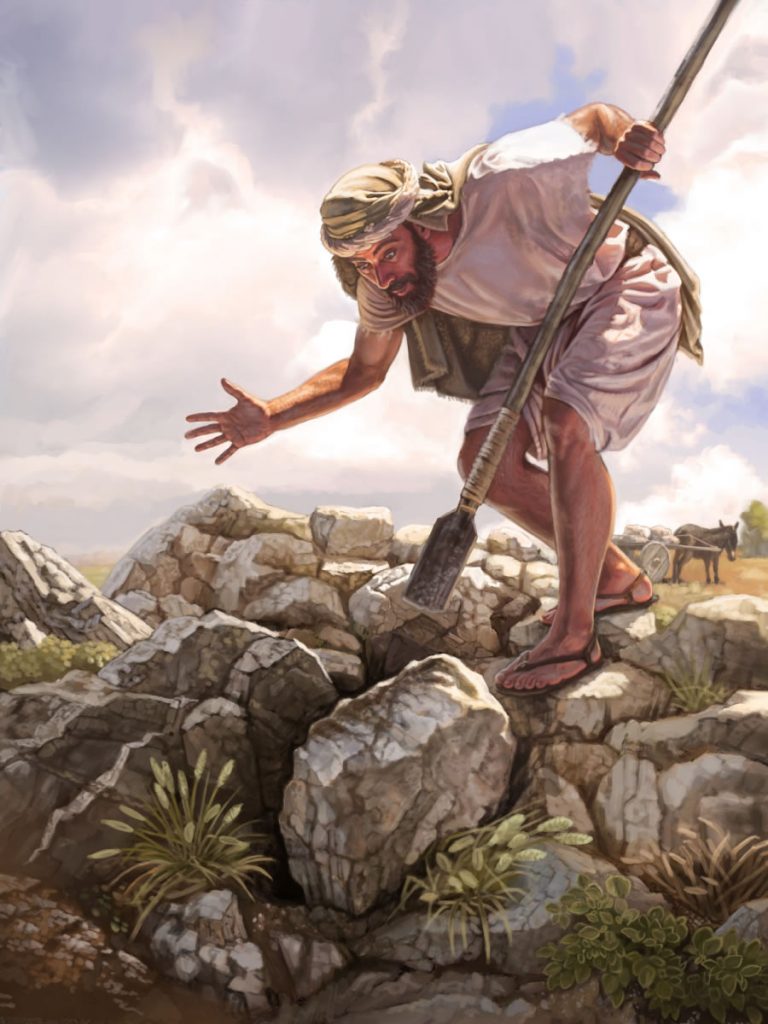
Throughout Lent, we’re exploring the parables of Jesus – the two dozen or so stories that were his chief means of describing the reality of God’s rule on earth.
The Beale Cipher is at the center of one of America’s most famous treasure hunts.
It’s estimated that one out of ten of the world’s best cryptanalysts – experts at solving complex puzzles – have tried to crack its code. So far, no one has succeeded.
The story begins early in the 1800s, when a man named Thomas J. Beale and 30 friends supposedly stumbled upon a mine filled with gold, silver, and jewels somewhere north of what is now New Mexico. After carefully transporting thousands of pounds of precious metals to the East coast, Beale was entrusted with the task of hiding the treasure in a secure location. He chose to place the valuables in iron pots within a stone-lined vault in Bedford County in his home state of Virginia.
Beale then produced three pages of numbers, each of them representing a complicated code. The first page provides the location of the underground vault. The second page describes the treasure itself. The third page presents a list of Beale’s associates and their next of kin.
Decades after Beale had left the scene, the second page was deciphered. The treasure it describes is staggering. In 1821 it would have been worth about $13,000. Today its estimated value exceeds $43 million.
That’s why there has been, to put it mildly, considerable interest in cracking the other two codes – especially the one on the first page, which allegedly pinpoints the location of the vault.
Would-be codebreakers are motivated by the fact that the second page is clearly a cipher based on the Declaration of Independence. The third number on the page is 24. If you search for the 24th word in Thomas Jefferson’s famous document, you find “another.” Using the first letter of that word, you now have “A” – and so forth, all the way down the list of numbers, until you assemble the hidden message.
If you’re thinking this might provide the basis for an entertaining Hollywood romp starring someone like Nicholas Cage, you now know the origin of National Treasure.
The challenge of the Beale Cipher is that no one has been able to figure out what documents are coded to pages one and three. The Constitution? That’s been tried. The Magna Carta? Nope. Particular books of the Bible? So far, even with the aid of supercomputers, highly committed number-crunchers haven’t been able to crack Mr. Beale’s codes.
In the meantime, virtually every acre of Bedford County, Virginia has been excavated by enthusiastic treasure hunters – often without the permission of landowners, with subsequent consequences in courts of law.
If you’d like, you can join the Beale Cipher and Treasure Association, which was founded in the 1960s. Or check out the website that is peddling Beale Cipher decryption software. One wonders why its creators haven’t solved the mystery themselves – but perhaps they’re content with the treasure that keeps coming in via VISA transactions.
Is the whole thing a hoax, as some believe? Perhaps.
But somebody sure went to a lot of trouble to create an intriguing puzzle – one that has kept mathematicians and amateur diggers busy for more than a century now.
If you’re acquainted with the 13th chapter of the Gospel of Matthew, you’ve already guessed today’s parable. It’s one of the shortest of Jesus’ short stories: “The kingdom of heaven is like treasure hidden in a field. When a man found it, he hid it again, and then in his joy went and sold all he had and bought that field.” (13:44)
There wasn’t anything resembling a trustworthy banking system until more than a thousand years after the time of the New Testament. If you needed to secure your nest egg, what could you do?
You could hide it in the ground. The owner of the treasure, unfortunately, might die before revealing its location. And if someone stumbled upon it, the money reverted not to its finder, but to the new owner of the land.
That’s why, in Jesus’ story, the digger who makes the discovery of a lifetime knows exactly what he has to do. He has to buy that property. This would not have been as easy as contacting a local real estate agent and putting an offer on the table. Ancestral lands were passed from generation to generation. Families would be exceedingly reluctant to part with the very soil where parents, grandparents, and great-grandparents had eked out their existence.
So the one who has discovered the hidden riches will have to count the cost.
Is he willing to surrender an astronomical sum – perhaps his entire net worth – in order to obtain the greatest treasure he’s ever seen?
That’s what Jesus is asking us: “What’s it worth to you to have a relationship with me? What will you put on the table? Will you turn your back on that habit you simply cannot give up? Or the prestige you’ve worked your whole life to achieve? Or your need to be in control of the next 24 hours? Or the dreams you have for your children, the ones you’re hoping will validate your identity as a good parent?”
It’s a question that ought to take our breath away.
We have some options, of course.
We can pretend that Jesus wasn’t really being serious. Or we can try to crack the Beale Cipher for ourselves. All three pages are posted online. Give it your best shot. Or we can just go buy a Powerball ticket and hope for the best.
Then again, we can believe that Jesus was being entirely serious. And we can accept his invitation:
We give up a life we cannot keep in order to gain a life we can never lose.
